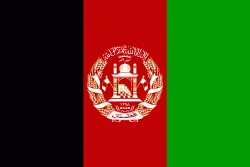Panjshir Province (Panjshir)
Panjshir became an independent province from neighboring Parwan Province in 2004. It is bordered by Baghlan and Takhar in the north, Badakhshan and Nuristan in the east, Laghman and Kapisa in the south, and Parwan in the west.
The territory was ruled by the Khanate of Bukhara between the early 16th century and the mid-18th century. The Parwan region, including the later Panjshir, was conquered by Ahmad Shah Durrani, and officially accepted as a part of the Durrani Empire, by Murad Beg of Bukhara, after a treaty of friendship was signed in or about 1750. The rule of the Durranis was followed by that of the Barakzai dynasty. During the 19th century, the region became part of the Emirate of Afghanistan, but was largely unaffected by British incursions, such as the Anglo-Afghan wars. Like the rest of Afghanistan, Panjshir became part of the newly established Kingdom of Afghanistan in June 1926.
In July 1973, troops under the command of General Sardar Mohammed Daoud Khan overthrew the Afghan monarchy and established the Republic of Afghanistan. In this coup d'état, General Daoud seized power for himself, effectively proclaiming himself as the first President of Afghanistan. He began making claims over large swathes of Pashtun-dominant territory in Pakistan, causing great anxiety to the government of Pakistan. By 1975, the young Ahmad Shah Massoud and his followers initiated an uprising in Panjshir, but were forced to flee to Peshawar in Pakistan where they received support from Pakistani Prime Minister Zulfiqar Ali Bhutto. Bhutto is said to have paved the way for the April 1978 Saur Revolution in Kabul by making General Daoud spread the Afghan Armed Forces to the countryside.
Panjshir was attacked multiple times during the 1980s Soviet–Afghan War, against Ahmad Shah Massoud and his forces. The Panjshir region was in rebel control from August 17, 1979, after a regional uprising. Aided by its mountainous terrain, the region was well defended by mujahedeen commanders during the war against the PDPA government and the Soviet Union.
After the collapse of the Democratic Republic of Afghanistan in 1992, the area became part of the Islamic State of Afghanistan. By the late 1990s, Panjshir and neighboring Badakhshan province served as a staging ground for the Northern Alliance against the Taliban. On September 9, 2001, Defense Minister Massoud was assassinated by two al-Qaeda operatives. Two days later the September 2001 attacks occurred in the United States and this led to the start of a major U.S.-led war in Afghanistan.
Containing the Panjshir Valley, in April 2004 Panjshir District of Parwan Province was turned into a province under the Karzai administration. The Afghan National Security Forces (ANSF) established several bases in the province. In the meantime, the International Security Assistance Force (ISAF) also established bases, a US-led Provincial Reconstruction Team (PRT) began operating in Panjshir in the late 2000s.
Following the Fall of Kabul on 15 August 2021, anti-Taliban forces loyal to the Islamic Republic of Afghanistan fled to the Panjshir Province. They formed the National Resistance Front of Afghanistan and kept fighting the new Islamic Emirate of Afghanistan in an ongoing conflict. The new resistance forces flew the old flag of the Northern Alliance. The resistance have held the Panjshir Valley and captured districts in neighboring provinces. By early September 2021, Taliban forces managed to push into Panjshir and capture several districts from the National Resistance Front of Afghanistan, before gaining control of Bazarak on 6 September, pushing remaining resistance fighters into the mountains. However, clashes still remain ongoing between the Taliban and resistance fighters in Panjshir Province. A subsequent visit by Radio Télévision Suisse and Journeyman Pictures into Bazarak in October 2021 also revealed that despite claims of NRF inactivity by local Taliban officials, an armed confrontation between the NRF Taliban was in fact occurring in an undisclosed location in the mountains surrounding Bazarak, with resistance forces gaining the upper hand, thus confirming that the NRF remains still active near Bazarak and in Panjshir Province. Although the NRF continues to carry out attacks, it does not control any territory in the province.
Map - Panjshir Province (Panjshir)
Map
Country - Afghanistan
 |
 |
| Flag of Afghanistan | |
Human habitation in Afghanistan dates back to the Middle Paleolithic era, and the country's strategic location along the historic Silk Road has led it to being described, picturesquely, as the ‘roundabout of the ancient world’. Popularly referred to as the graveyard of empires, the land has historically been home to various peoples and has witnessed numerous military campaigns, including those by the Persians, Alexander the Great, the Maurya Empire, Arab Muslims, the Mongols, the British, the Soviet Union, and most recently by a US-led coalition. Afghanistan also served as the source from which the Greco-Bactrians and the Mughals, amongst others, rose to form major empires. The various conquests and periods in both the Iranian and Indian cultural spheres made the area a center for Zoroastrianism, Buddhism, Hinduism, and later Islam throughout history.
Currency / Language
| ISO | Currency | Symbol | Significant figures |
|---|---|---|---|
| AFN | Afghan afghani | Ø‹ | 2 |
| ISO | Language |
|---|---|
| PS | Pashto language |
| FA | Persian language |
| TK | Turkmen language |
| UZ | Uzbek language |















